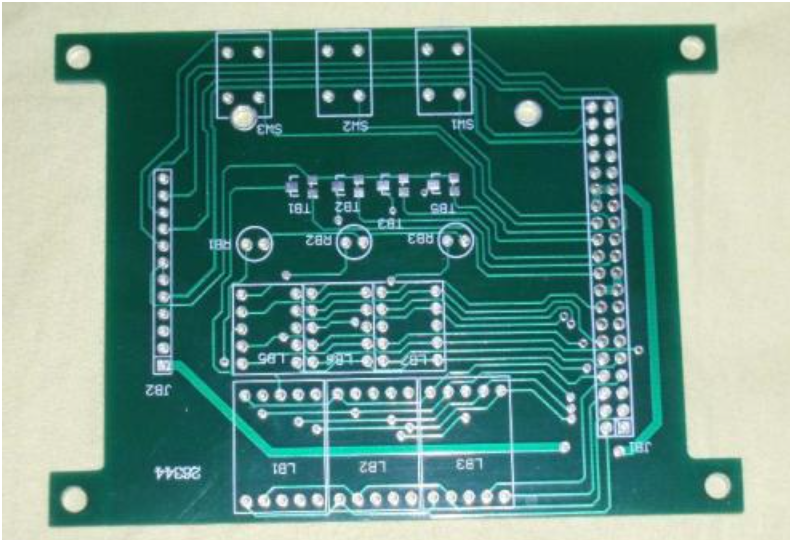With the conversion of PCB surface soldering to lead-free type, the soldering temperature that the circuit board needs to withstand is extremely high, and the requirement for the thermal shock resistance of the surface solder mask is getting higher and higher. The surface treatment of the terminal and the solder mask (ink, covering The peel strength of the film) and the bonding force with the base copper are required to be higher and higher. We need a better pre-processing PCB process to ensure it. By improving our technology to increase product yield, we can obtain profit growth points. High-quality pre-treatment potions can undoubtedly help us at low cost.

This article mainly introduces the problems and countermeasures that are often encountered in the production process of PCB rigid circuit board and FPB flexible circuit board:
1. After dry film or wet film treatment occurs in the line section, side corrosion and etchback will occur when the line is etched, resulting in insufficient line width or uneven line. The reason is nothing more than improper selection of dry and wet film materials, improper exposure parameters, and poor performance of the exposure machine. Development and etching section nozzle adjustment, unreasonable adjustment of related parameters, improper chemical solution concentration range, improper transmission speed, etc. may lead to problems. However, we often find that after checking the above parameters and the performance of related equipment, there is no abnormality. However, problems such as over-corrosion and
pitting of the circuit board still occur when the board is made. what is the root cause?
2. When doing PCB pattern electroplating, PCB, FPC terminal surface treatments such as immersion gold, electro-gold, electro-tin, tin and other process treatments, we often find that the made board has seepage at the edge of the dry and wet film or the edge of the solder mask. The phenomenon of plating, or most of the board, or some places, no matter which situation will bring unnecessary scrap or bad, it will bring unnecessary troubles to the post-processing, and even the final scrap, which is heartbreaking. ! Investigating the reasons, everyone usually thinks of the dry and wet film parameters, the material properties have problems; the solder mask such as the ink used for the hard board, the cover film used for the soft board has problems, or there are problems in the printing, pressing, curing and other stages. . Indeed, each of these places can cause this problem. Then we are also confused that after checking the above steps, there is no problem or the problem is solved, but the phenomenon of infiltration still occurs. Is there any reason why it hasn't been found out?
3. The circuit board will be tin tested before shipment, and of course the customer will tin solder the components during use. It is possible that both stages will occur, or immersion tin or solder blistering will occur at a certain stage, and the substrate will be peeled off, and even when the tape is used to test the peel strength of the ink, the ink may appear when the peel strength of the flexible board cover film is tested by the tensile force. The problem of obvious peeling or insufficient or uneven peel strength of the cover film is absolutely unacceptable to customers, especially those who do precision SMT placement. Once the solder mask is shiny and peeled during soldering, it will cause the original parts to be unable to be accurately mounted, resulting in the loss of a large number of components and lost work by the customer. The circuit board factory will also face huge losses such as deductions, replenishment, and even loss of customers. Then, when we encounter such problems, which areas do we usually work on? We usually analyze whether there is a problem with solder mask (ink, cover film) materials; whether there is a problem with the screen printing, lamination, and curing stages; whether there is a problem with the electroplating solution? and many more. . . So we usually order engineers to find out the reasons from these sections and make improvements. We will also think about the weather? It has been relatively humid recently. Has the board absorbed moisture? (Both the base material and the barrier are easy to absorb moisture) After some hard work, some effects can be gained, and the problem is temporarily solved on the surface. But this kind of problem happened again inadvertently, what is the reason? Those work sections that may have problems have been checked and improved. What else did you not notice?
In response to the above-mentioned widespread perplexities and problems in the PCB and FPC industries. We have conducted a lot of experiments and research, and finally found that an important reason for problems such as poor wiring, infiltration, delamination, blistering, and insufficient peel strength is the pre-treatment part. Including dry and wet film pretreatment, solder mask treatment, electroplating pretreatment and other multi-stage pretreatment parts. Speaking of this, perhaps many people in the industry can't help but laugh. The pre-treatment is the simplest, pickling, degreasing, and micro-etching. Many technicians in the industry know which pre-treatment potion, performance, parameters, and even formula.